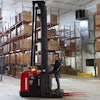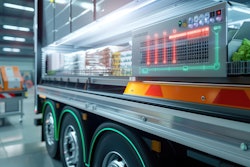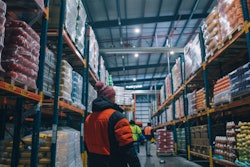
Few sectors mirror the impact of macro-economic conditions and the subtle changes and trends impacting commerce more than the grocery industry. From the growth of online sales to fluctuations in consumer confidence and inflationary forces, grocery stores are often ground zero in a constantly changing economic landscape.
Historically, consumers are notoriously price conscious about groceries in comparison to other much pricier purchases – something we witnessed recently when skyrocketing egg prices caused widespread discontent. Such price sensitivity though is not new. Grocers have long operated on what other industries would consider razor-thin margins.
That is one of the reasons why one cannot help but be struck by the variety of items available to grocery shoppers today. The factors that must be addressed, including stringent parameters to prevent spoilage and temperature constraints for cold or frozen items, create levels of complexity that must be managed and far exceed those faced in other retail environments. More than anything else, the broad selection of choices consumers take for granted in grocery stores today are the result of a robust fulfillment and store-stocking sector that is responsible for moving items from warehouse and distribution centers to the store floor.
The stocking process that enables shoppers to purchase fresh produce in the winter and enjoy “seasonal” varieties year-round culminates with items being placed on store shelves. This manual process is completed by an army of stockers that usually arrive near closing time. However, the fulfillment process begins much earlier, starting when trucks deliver goods to grocers’ warehouses and distribution centers.
It is from that starting point to the stocking of shelves that we are witnessing a sea of change, as materials handling operations embrace automation and transform what has long been a largely manual endeavor. It’s a change caused by a challenge materials handling operations know well: the shortage of labor and difficulty of retaining it.
Much like their counterparts in e-commerce, grocers are turning to warehouse automation to address this challenge. Such efforts not only expose the myriad of pain points that have impacted grocery store fulfillment operations for years, but also demonstrate where automated systems have the greatest potential to make a difference.
Most notably, these efforts reveal a singular, often overlooked truth: the efficiency of store fulfillment operations directly reflects the efficiency of warehouse and distribution center operations.
The modernization of grocery store fulfillment
While unique to each organization and subject to emerging advancements, grocers today are focused on using technology to transform their store fulfillment operations. These efforts involve varying degrees of automation as organizations look to find the right balance of automated systems, robotics and people to address their needs, budgets, and plans for growth. For most grocers, however, automation proves particularly applicable in several core processes, including:
● Receiving: When products, typically palletized items, arrive at grocers’ warehouses, they are moved inside and then checked for quality in preparation for storage. Increasingly, materials handling operations are moving away from the status quo, relying on employees with pallet jacks and forklifts to complete this labor-intensive task. Instead, they are utilizing scanners, conveyors, and autonomous guided vehicles (AGVs) to perform these functions with fewer people.
● Storage: Once the received products are inspected for quality and accuracy, pallets of grocery items are placed in storage, a process that once required people to load cases onto racks, typically with forklifts. Today, this process is increasingly being handled by automated systems, including AGVs, cranes, and other innovative technologies like climbing automated case-handling mobile robots (ACRs) and high-speed, shuttle-based automated storage and retrieval systems (AS/RS).
● Picking: The picking process is the most labor-intensive and arguably the most important process in any grocery warehouse. Historically, this required employees to spend the majority of their time – up to 70% or more – walking to retrieve items listed on each store’s inventory manifest. Now grocers have reversed this dynamic of moving goods to people and machines, rather than having people move to the goods.
Whether through an incremental approach, where an AS/RS brings items to a human picker that then moves the case from a workstation, or a fully automated method, where items are moved by AS/RS to a palletizing robot, the efficiency gains are dramatic. In the former scenario operational expenses decrease by 25%, while in the latter, operational expenses can decrease by 33%.
● Palletizing: Palletizing robots are increasingly used to augment people in the creation of pallets that are then sent to stores. Tasks such as wrapping and labeling pallets can now be fully automated. This automation not only addresses the injury-prone process of stacking and creating pallets, but also streamlines the process by organizing pallets in a way that eliminates one of the most time-consuming steps in grocery fulfillment – the breakdown and repalletizing of items at the store. Autonomously stacked pallets are also optimized for greater stability and reducing the risk of product damage.
● Breaking down and repalletizing items for in-store stocking: Stockers know the drill – receiving pallets of items at the store, breaking them down, and re-palletizing them to transport to aisles for unloading. It is a time-consuming and labor-intensive process. Advanced automation negates these steps by creating pallets that are constructed to address each store’s unique inventory needs and layout. For instance, a store might receive a pallet for Aisle 2 that includes cases that can be unwrapped and stocked directly onto shelves.
Secrets to success
While these use cases may appear broadly applicable at first glance, every grocer and each store’s inventory needs are unique. To effectively implement automation in store replenishment efforts, supply chain leaders should consider the following:
● Create a business case: Analyze your current operations, identify bottlenecks, define your goals and complete a thorough cost-benefit analysis. The most advanced automation may not be the best fit for your operation. Existing facilities, budgetary constraints, growth strategies and many other factors must be considered. Trusted third-party experts should also be involved with additional stakeholders before getting executive buy-in.
● Gather and analyze the right data: Take the time to gather accurate data and gather SKU-level insights. Do you know which items are your fast movers? Look closely at the remaining 80% of your inventory as that is often where issues lie.
● Don’t be complacent: What makes you good doesn’t necessarily make you great. Consider automation, but do not embrace automation for automation’s sake. Each and every grocer’s automation journey is unique and should be approached accordingly.
Grocers have more opportunity today than ever to reduce costs, enhance employee opportunities, reduce workplace injuries, improve inventory management, and decrease product damage by rethinking store-level fulfillment. Perhaps most importantly, these benefits can be achieved by materials handling operations embracing one key shift in perspective: thinking of stores as warehouse and distribution center customers.


















